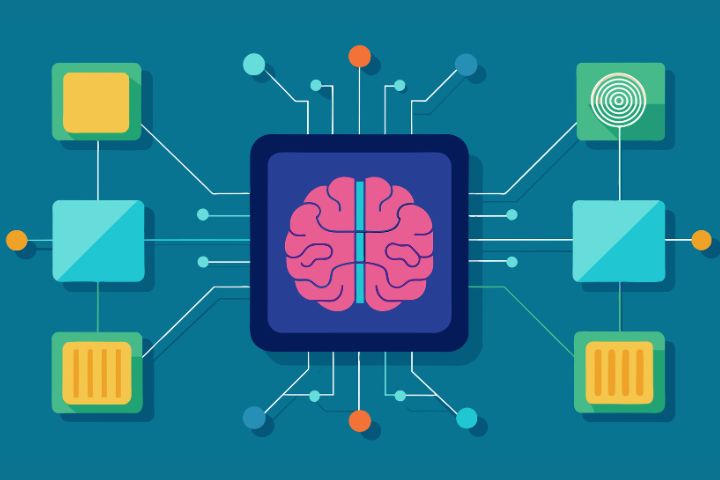Deep Learning Frameworks: Unleashing the Power of AI

Deep learning’s capabilities for data handling and decision-making have led to high levels of its application within organizations. Central to this revolutionizing technology are deep learning frameworks that provide programmers, engineers, and scientists with the application programming interfaces and methods that facilitate the effective design, training, and deployment of deep learning models. These frameworks put the often esoteric operations and algorithms of deep learning into more understandable and manageable forms, which enable users to primarily concern themselves with the construction of the model and the testing of all its possibilities.
In the context of this article, we will discuss certain key frameworks in deep learning, showcase their benefits, and discuss how they are contributing to the progression of the age of artificial intelligence.
The Role of Deep Learning Frameworks
Deep learning frameworks are tools to develop an artificial neural network model or deep learning model. These frameworks include layers, loss functions, and optimizers, which solve some algorithms and help in building models from scratch. Furthermore, frameworks provide ways of how to evaluate, optimize, and deploy a model making the entire process faster.
Hiding the computations from users, deep learning frameworks enable researchers and developers to work on more general and abstract levels, like the model’s architecture or the choice of hyperparameters. This abstraction is important because deep learning tasks contain various operations, such as matrix multiplications and gradient optimizations, that take a long time and are easily erroneous if implemented manually.
Popular Deep Learning Frameworks
1. TensorFlow
TensorFlow is a popular deep learning platform created by Google that is widely used in the development of modern deep learning systems. They have versatility and high adaptability and, therefore, are ideal for use both in research and industrial applications. TensorFlow enables multiple machine learning tasks, such as image and voice classification, NLP, and reinforcement learning.
Decorative tensorflow is relatively flexible when it comes to the deployment of models as these can run on CPUs, GPUs, and even on mobile. This flexibility is greatly supported by TensorFlow Lite, which is a lightweight version for mobile and embedded uses, and TensorFlow. js, an API for running machine learning models in the browser using JavaScript.
Another important component is Keras, which is considered a synonym for TensorFlow as a high-level API that allows developers to prototype deep learning models. Keras provides a straightforward front that hides many of the hardships that are closely related to deep learning in TensorFlow.
2. PyTorch
PyTorch has grown in popularity because of its simplicity and flexibility, as well as Facebook’s artificial intelligence research group’s open-source deep learning platform. One of the most important differences is that PyTorch uses dynamic graphs, while TensorFlow uses static graphs. This means that computations can be changed during the runtime. This makes it suitable for research and experimentation where there is a need for flexibility and debugging.
PyTorch’s simple and elegant API appeals to the academics and developers who do not want to part with their code. This is extremely useful in NLP and computer vision. Hugging Face Transformers, a popular Natural Language Processing library, interacts with PyTorch.
An important aspect of PyTorch is the torch. The nn module has many pre-defined neural network levels, making model building easy. Autograd differentiates and optimizes backpropagation and gradient calculations, which are essential for deep-learning model training.
3. MXNet
Apache MXNet is a deep learning framework that aims to provide the best scalability and performance. MXNet is also very efficient with support from Amazon Web Services (AWS) and supports both symbolic and imperative programming methods. The usage of this package is particularly optimized for large deep-learning datasets and provides extraordinary support for distributed computing, which makes it suitable for deploying learned models in the cloud context.
One of the advantages of MXNet is that the API is compatible with a sweep of languages, including Python, Scala, and R. Gluon API has an easy-to-use interface for creating models, like the dynamic computation graph in PyTorch. MXNet is also designed with AWS deployment in mind, which makes it ideal for organizations that use AI solutions on the cloud.
4. Caffe
Caffe is a deep learning framework built by the Berkeley Vision and Learning Center (BVLC) at the University of California Berkeley. It is famous for its fast and light speed and is more efficient for image classification, especially when used in conjunction with a convolutional neural network (CNN).
Caffe is specifically designed to scale well both for CPU and GPU and naturally supports large training sets. It has a flexible and expressive architecture and can be prototyped relatively quickly; however, it is somewhat less flexible than frameworks such as TensorFlow or PyTorch. Nevertheless, Caffe is still fairly workable for developers who work with image processing tricks.
5. Theano
Theano is one of the oldest tools for building deep learning models, created by the Montreal Institute for Learning Algorithms (MILA). Although Theano is no longer actively developed, it has greatly influenced modern deep-learning frameworks and is being used in research. Theano’s strong suit is its capability to optimize mathematical expressions, which makes it particularly suited for deep learning tasks.
Theano can work with CPU and GPU and includes an option for automatic differentiation, which is useful in fine-tuning deep-learning neural networks. Although it has become less popular with improvements in other frameworks like TensorFlow and PyTorch, Theano will always be remembered as one of the breakthrough tools for deep learning.
Choosing the Right Framework
Choosing the correct framework for deep learning involves the ability, flexibility, task, and target platform of deployment. For example, TensorFlow is highly scalable and thus preferred in production settings, whereas PyTorch is inherently more usable and favorite for research. MXNet is particularly suitable for distributed training across multiple servers and may be better suited than Caffe for some tasks that involve images.
Finally, it boils down to the necessity of one framework to the other, and it is not uncommon to find developers or researchers engaging in the use of several frameworks as the need arises.
Conclusion
Specifically, deep learning frameworks are the key to the simplification of the application of AI in various fields. These frameworks have enabled the development of AI applications by equipping industries with the necessary tools for building, training, and deploying AI models. Whether you are a researcher who wants to explore the limits of deep learning or a developer who needs to create practical artificial intelligence applications, the choice of the correct deep learning framework is decisive. These frameworks will, without a doubt, become even more important as the field continues to grow and develop in the future.


